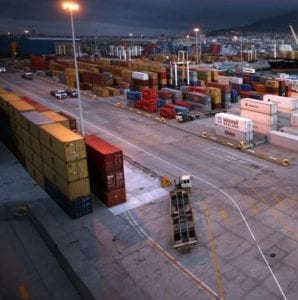Cape Town Container Terminal (CTCT) is the country’s second largest terminal after Durban, and is undergoing a massive R4.2 billion expansion programme in line with Transnet’s elaborate market demand strategy. IMIESA finds out more.
Due to its geographical location, the Port of Cape Town is the first port of call for North America and Europe, offering a unique advantage for handling time-sensitive cargo, such as fruit to Europe. In November 2013, the CTCT, which is situated at the Port of Cape Town,was named one of the world’s top 120 container ports – for the first time – by the 2013 Container Management Report. The achievement was a return on investment forport owner Transnet’s R4.2 billion expansion programme, which forms part of the state-owned company’s five-year R110 billion capital investment programme at the CTCT. Global perspective Transnet’s market demand strategy (MDS) will see R307 billion being pumped into infrastructure development and refurbishment across its freight rail, ports and pipelines divisions until 2019/20. The objective of the MDS is to significantly boost the South African economy, with the creation of 588 000 direct and indirect jobs by the end period. Additionally, the MDS will see a huge shift in road to rail transportation and will open up the ports to more trade by increasing twenty-foot equivalent unit (TEU) capacity.The anticipated slowdown in trade has become a reality, with world trade volumes having slowed to an estimated 3.5% in 2012. As a result, container port handling is also expected to have slumped. Global container traffic only grew around 3.4% in 2012, and the industry has experienced three poor profit years.
Completed work For the CTCT, the R4.7 billion expansion programme comes with the aim of increasing total TEU capacity from 700 000 TEUs to 1.4 million TEUs. Thus far, phases one and two have been completed and the terminal’s current throughput is 853 399. These phases included a 10 m extension of the quay wall at a depth of 15.5 m over the full 1 137 m length of the quay. The container stacking yard was also converted from a straddle carrier operation to a rubber-tyred gantry operation. The strategic advantage of a rubber-tyred gantry is dense container stacking, thereby providing better utilisation of space. As part of the expansion, the terminal acquired six new super post Panamax ship-to-shore gantry cranes, which will ensure more efficient and productive port operations. In addition, major dredging, deepening and refurbishment work has already been completed on the first two phases.







